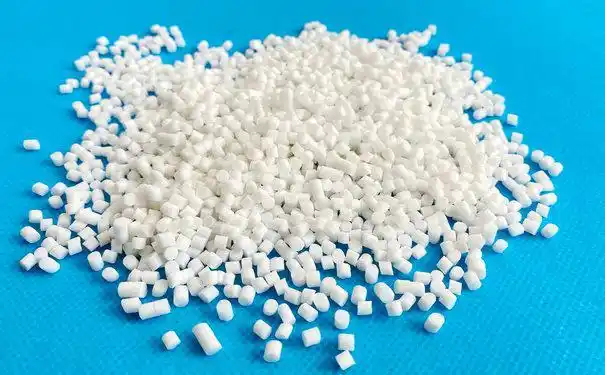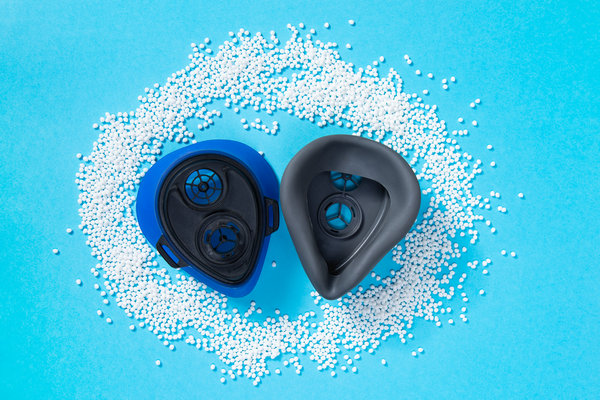The first time I handled a 0 hardness TPE sample, I almost laughed — not because it was bad, but because it challenged everything I thought I knew about “solid” materials. It didn’t behave like a rubber band, a gel, or even soft silicone. Instead, it felt somewhere between a lump of jelly and a viscous putty — but still held together in one piece.
As someone who has worked with TPE (Thermoplastic Elastomer) formulations for years, I’ve watched hardness ratings go from rigid 90 Shore A materials for automotive trims all the way down to super-soft gels for wearable devices. And when a customer asks for “0 hardness,” it usually means they’re after the softest, most skin-like feel possible — but it also comes with very specific handling and design considerations.
In this article, I’ll break down what “0 hardness” actually means, how it’s measured, what it feels like, and when it’s used in real-world products.

1. Understanding Hardness in TPE
Before we get into what “0 hardness” feels like, we need to understand how hardness is measured in elastomers.
Most soft TPEs are measured using the Shore hardness scale — typically Shore A for softer materials and Shore 00 for ultra-soft materials. The scale runs from 0 (extremely soft) to 100 (very hard).
A Shore A 90 feels like a car tire tread.
A Shore A 70 is like a shoe sole.
A Shore A 20 is a soft rubber band.
Shore 00 is used when even Shore A 0 is still too firm to describe the softness.
Table: Comparing Material Hardness
| Material Example | Shore Hardness Scale | Feel |
|---|---|---|
| Car tire tread | A 90 | Very firm rubber |
| Silicone kitchen spatula | A 40–50 | Flexible but holds shape |
| Soft mouse pad foam | A 20–30 | Soft, squeezable |
| Gel shoe insole | 00 20–40 | Very soft, gel-like |
| 0 hardness TPE | 00 0–10 | Extremely soft, almost fluid-like |
In common usage, when someone says “0 hardness TPE,” they’re usually referring to a Shore 00 reading close to zero — not literally “zero” in the physical sense (a material with zero hardness would not hold any shape at all).
In testing, Shore hardness is determined by pressing a calibrated indenter into the surface under a specific load. The softer the material, the deeper the penetration, and the lower the reading. At Shore 00 near zero, the indenter sinks almost completely in.
In plain terms:
It’s softer than most foams, softer than skin, and only slightly firmer than hair gel.
It will deform under its own weight if shaped into something large.
It often has a wet, tacky surface feel unless treated with a coating or powder.

3. How It Feels in the Hand
If you’ve never touched 0 hardness TPE, the closest analogues are:
A thick gel pad used in some therapeutic cushions.
The inside of a stress ball filled with gel.
Soft modeling putty — but without breaking into pieces.
When you squeeze it:
It compresses with almost no resistance.
It slowly regains its shape, often with a “flowy” rebound rather than a snap-back.
In larger pieces, it can sag or spread under gravity.
4. Processing Challenges
From a manufacturing standpoint, 0 hardness TPE is not easy to process. In injection molding, its extremely low modulus means:
The material can be hard to eject without deformation.
Gate and runner design must minimize shear, as the soft matrix can tear.
Cooling times can be longer due to low thermal conductivity and high stickiness.
It’s also more sensitive to dust, lint, and surface defects, since the tacky surface tends to attract contaminants during handling.
5. Where It’s Used
0 hardness TPEs are used where extreme softness and flexibility are essential:
Medical devices — cushioning interfaces for prosthetics, patient comfort pads.
Wearables — skin-contact gels for fitness trackers or medical electrodes.
Toys and novelty items — for safe, squishy textures.
Vibration isolation — in sensitive equipment, where high damping is needed.
Cosmetic packaging — ultra-soft grips or applicator tips.
In many of these cases, the material is either overmolded onto a rigid substrate or encapsulated in a protective film to make handling easier.
6. Why Not Use It Everywhere?
While the softness is appealing, 0 hardness TPEs have drawbacks:
Low tear resistance — they can rip if stretched aggressively.
Shape instability — large unsupported shapes can slump.
Surface tack — requires coatings or powders in many applications.
Higher material cost — often made from specialized compounds with added oils or gels.
For applications needing durability, higher hardness grades (Shore A 10–30) are often a better compromise.

7. How Formulation Achieves 0 Hardness
In my years of working with compounders, I’ve seen 0 hardness achieved through:
High plasticizer loading — adding oils or gels to soften the matrix.
Low crystallinity polymers — to prevent rigid domains from forming.
Blends of elastomers and gels — to mimic fluid-like behavior without full liquefaction.
However, heavy plasticizer use can cause migration over time — the “oily” surface some older soft parts develop.
8. Storage and Longevity
Because of the high oil content and softness, 0 hardness TPEs are more prone to:
Dust contamination — always store covered or bagged.
Oil migration — store in a cool environment to slow this down.
Shape creep — store in shapes supported by their intended geometry.
If stored well, they can last years without major degradation, but surface properties may slowly change.
9. Testing and Quality Control
When supplying 0 hardness TPE to clients, I always recommend:
Shore 00 hardness test to verify softness.
Tensile and elongation tests — even if low, these should be consistent batch to batch.
Compression set tests — critical for cushioning applications.
Visual inspection — for dust, bubbles, or surface stickiness changes.
10. The Customer Reaction Factor
Interestingly, the “wow” factor of 0 hardness TPE is huge. People instinctively squeeze, poke, and stretch it — which is part of the appeal in consumer products. In marketing, it communicates comfort and softness instantly.
But in engineering, that same softness means you must design around its limitations — for example, embedding it in a rigid frame or encapsulating it in a film.
Conclusion
A 0 hardness TPE elastomer is the softest form of solid you’re likely to hold — gel-like, ultra-flexible, and skin-friendly, but also delicate and process-sensitive. It’s a fascinating material both to work with and to experience, and when used correctly, it can transform the tactile impression of a product.
From my years in elastomer development, I can say this: the magic of 0 hardness TPE lies not just in its softness, but in how you design the product around it. Without smart engineering, that softness can turn into a liability. But with the right approach, it’s unbeatable for comfort and touch appeal.

Q&A Section
Q: Is 0 hardness the same as liquid?
A: No. It’s extremely soft but still a solid — it holds together without flowing like a liquid.
Q: Can 0 hardness TPE be injection molded?
A: Yes, but it requires careful tooling and handling to avoid deformation.
Q: Will it lose softness over time?
A: If stored well, it maintains softness, though surface tackiness may change slightly.
Q: Can it be colored?
A: Yes — but pigments must be compatible with the high oil content to avoid separation.
Q: Is it safe for skin contact?
A: Many grades are formulated for skin safety, but always verify with the supplier.





